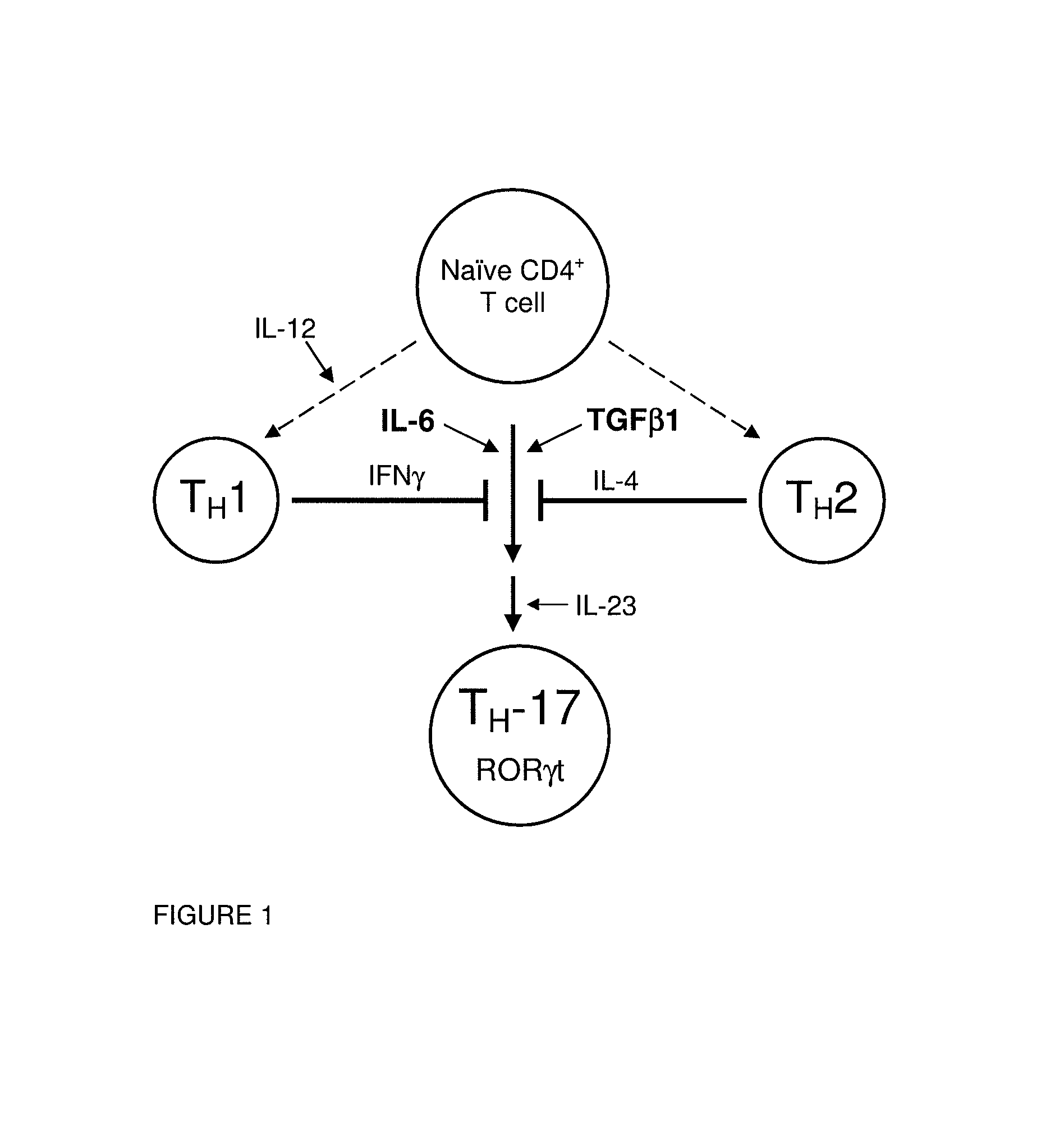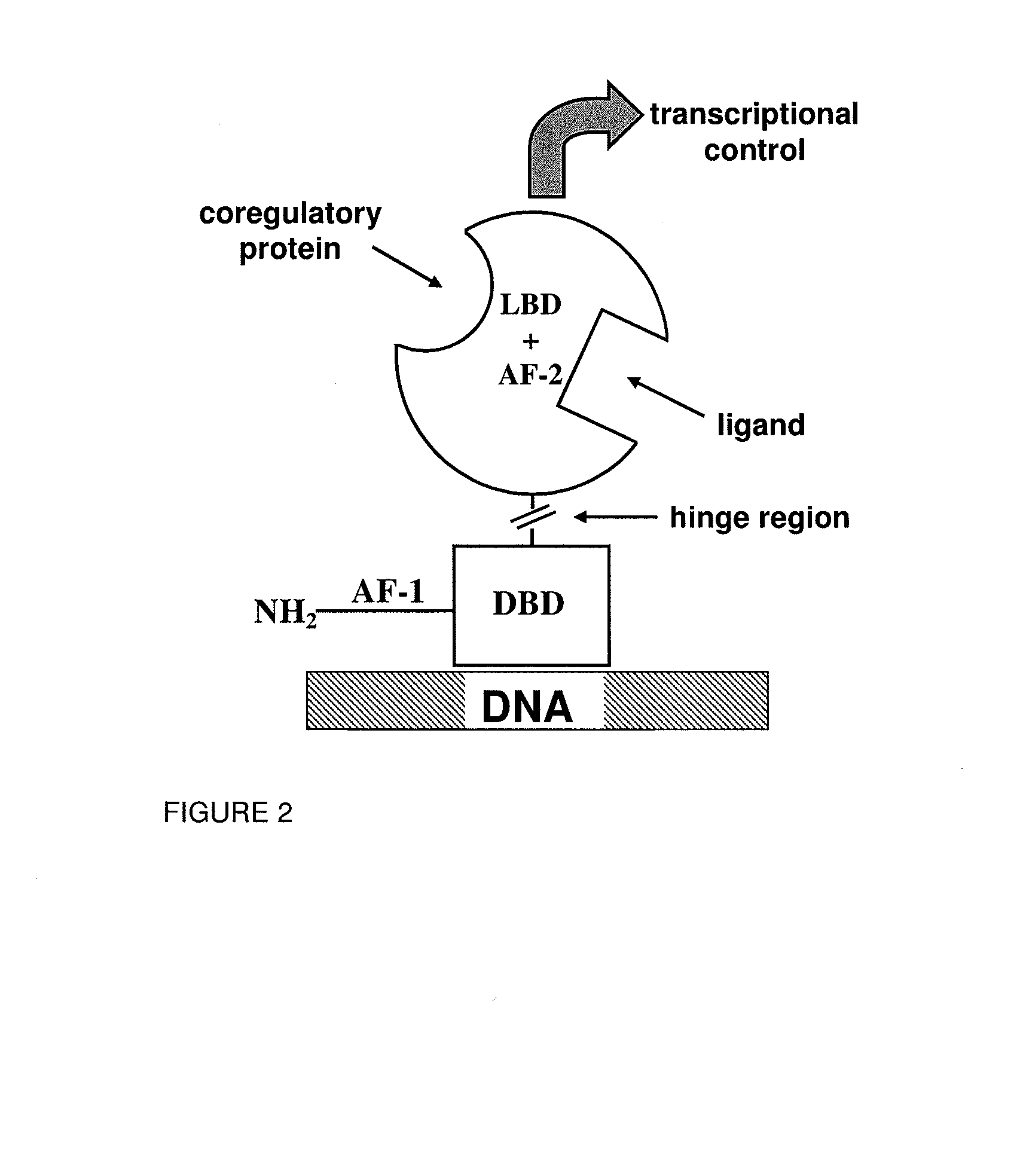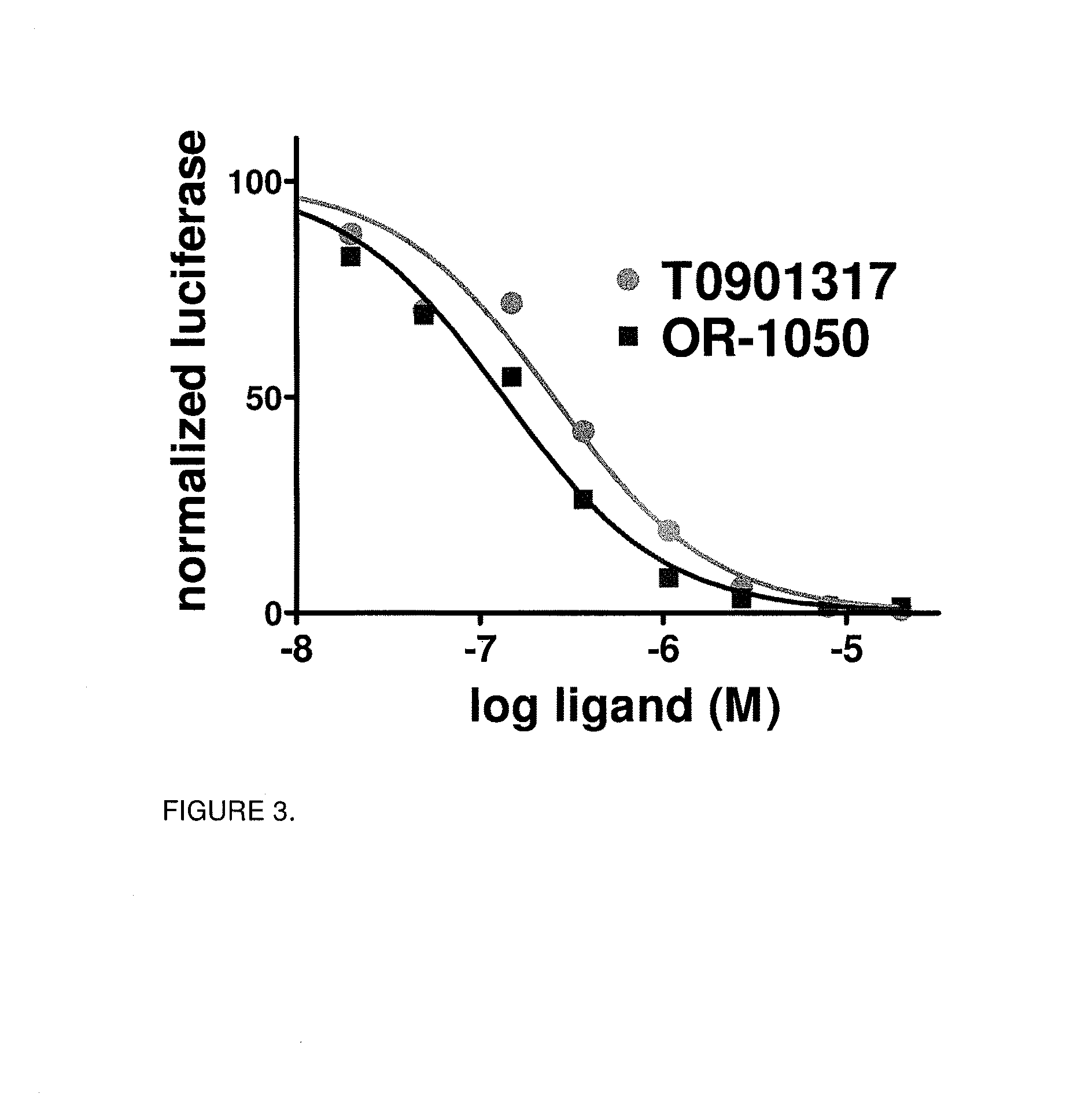Modulators of retinoid-related orphan receptor gamma
- Summary
- Abstract
- Description
- Claims
- Application Information
AI Technical Summary
Benefits of technology
Problems solved by technology
Method used
Image
Examples
example 1
[0144]This example describes ligands to RORγ and confirms their receptor regulation properties in two mechanistically distinct receptor assays. Transcriptional assays for mouse and human RORγ (mRORγ and hRORγ) were implemented in cultured cells. A biochemical assay, using exogenously expressed mRORγ LBD, was established to measure ligand-mediated regulation of coregulatory peptide recruitment in vitro. The transcriptional assay measures the product of a reporter gene, such as an enzyme, whose expression is in turn regulated by the RORγ LBD. The biochemical assay responds to a ligand-dependent conformational change in the receptor LBD that changes receptor affinity for coregulatory peptide. The ligands to RORγ described here were predominantly identified in the transcriptional assay and confirmed in the biochemical assay.
[0145]This example also describes several additional tests that were commonly performed to confirm the authenticity of a hit to RORγ. These tests also verified the v...
example 2
[0202]It is not unusual for a single compound to interact with receptors from different subfamilies within the nuclear receptor superfamily (Laudet 1999). Nuclear receptor crossreactivity is sufficiently common that it must be accounted for in a program of ligand design and characterization. An example of such a crossreactive ligand is TTNPB, which binds the retinoic acid receptors (RARα, RARβ, and RARγ) from the NR1B subfamily and the farnesoid X-receptor FXR (Zavacki, Lehmann et al. 1997) in subfamily NR1H. Other examples are the estrogen receptor (NR3A) ligands diethylstilbestrol (DES), tamoxifen (TAM), and 4-hydroxytamoxifen (4-OHT) which bind the estrogen-related receptor ERRγ (NR3B3) (Coward, Lee et al. 2001). Therefore, transcriptional assays were developed to characterize RORγ ligands at several of the other major nuclear receptors.
Methods
[0203]Table 5 lists details of construction of Gal4 hybrids with the following nuclear receptor LBDs. The positive control compounds for t...
example 3
[0212]The differentiation of purified naïve murine CD4+ splenic T cells into TH-17 cells in cell culture is simulated by a combination of the cytokines TGFβ and IL-6 or inhibited by the cytokine IFN-γ (Mangan, Harrington et al. 2006; Veldhoen, Hocking et al. 2006). This is not the only differentiation pathway available to naïve CD4+ T cells (FIG. 1). For example, IL-12 stimulates the differentiation of TH1 cells in the same system. The effects of continuous treatment with RORγ agonists and antagonists on TH1 and TH-17 differentiation were investigated. This example demonstrates that small molecule ligands to RORγ regulate TH-17 T cell differentiation. In these experiments, a TH-17 cell was identified by cell surface staining for CD4 and intracellular staining with a labeled antibody to IL-17. In particular, we observe that antagonists to RORγ inhibit TH-17 cell differentiation but have no consistent effect on the differentiation of murine TH1 cells (that are CD4+ IFNγ+ but do not ex...
PUM
| Property | Measurement | Unit |
|---|---|---|
| Mass | aaaaa | aaaaa |
| Molar density | aaaaa | aaaaa |
| Molar density | aaaaa | aaaaa |
Abstract
Description
Claims
Application Information
 Login to View More
Login to View More - R&D
- Intellectual Property
- Life Sciences
- Materials
- Tech Scout
- Unparalleled Data Quality
- Higher Quality Content
- 60% Fewer Hallucinations
Browse by: Latest US Patents, China's latest patents, Technical Efficacy Thesaurus, Application Domain, Technology Topic, Popular Technical Reports.
© 2025 PatSnap. All rights reserved.Legal|Privacy policy|Modern Slavery Act Transparency Statement|Sitemap|About US| Contact US: help@patsnap.com



